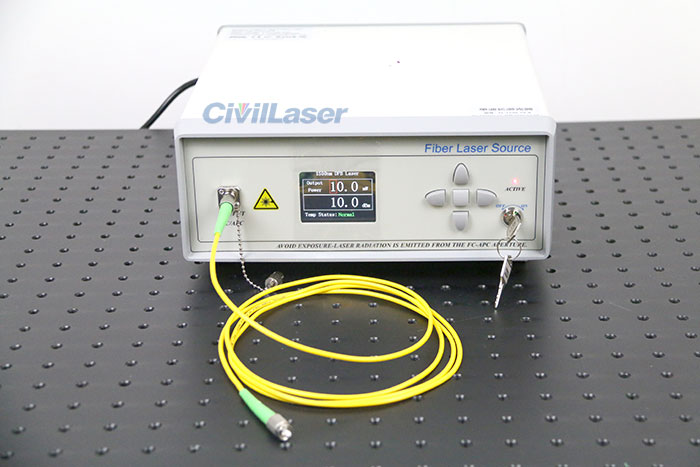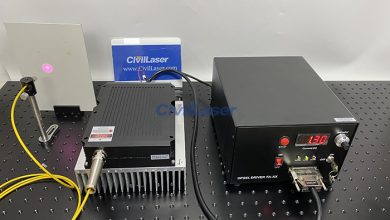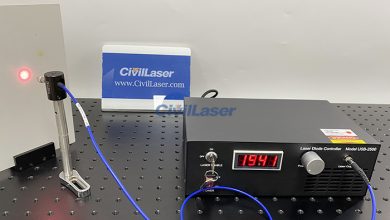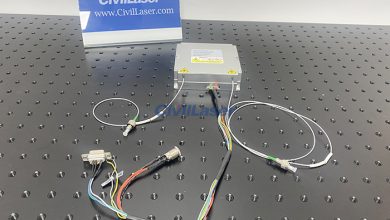Laser NewsLaser Technology
Research on the Application of Laser Technology in Materials Processing
Abstract: The author briefly describes the main characteristics of laser processing, and also comprehensively introduces the specific application of laser drilling, laser cutting, laser welding and surface pre-heat treatment, the formation of lasers, and the rapid application of laser rapid prototypes in material processing. Based on these, the author has a reasonable outlook on the future development of laser technology in China.
As one of the most practical, innovative and great inventions of the twentieth century, the invention and emergence of laser technology have produced huge changes in people’s lives and work. It was nominated alongside electronic computers (Internet technology), aerospace technology, semiconductor technology, and thermonuclear technology for major scientific and technological achievements of this century. Human beings obtained the first laser for the first time in May 1960. It has now been nearly sixty years, and laser technology has penetrated into scientific research, industry, agriculture, national defense, and all aspects of people’s work and life. In addition, in the field of material processing in China, the laser processing technology has been very mature due to its unique advantages, and is called an important means and method for the future processing and manufacturing industry.

- The Main Features of Laser Processing Technology
The reason why laser processing technology is particularly suitable for automated processing is mainly determined by its own characteristics. The main features of laser processing technology include: the controllable optimization of time; the spatial controllability of lasers, such as the ability to rotate the laser beam, the direction of the beam, and the ability to scan at the same time. At the same time, the best way to control the laser processing system is to use computer technology. The reasonable combination of this processing method and Internet technology can form automated processing equipment. This processing equipment can effectively reduce the cost in the processing process and ensure the processing quality, thereby improving the broader and brighter development prospects for laser processing technology. Among them, the main features of laser processing technology include the following parts:
(1) It can effectively improve the efficiency of processing. In the actual production and processing process, the effective cutting of materials by laser processing is eight to twenty times more efficient than that of ordinary cutting methods; the efficiency of the process of deep-fusion welding in the production process is compared with the traditional method Thirty times higher. In this process, after the thin-film resistor is fine-tuned by laser, the efficiency can be increased by up to a thousand times, and the accuracy of the instrument measurement can be improved by one to two orders of magnitude. In the process of strengthening the plating with a laser, the metal deposition rate during the plating process can be effectively increased, and the deposition rate can reach more than a thousand times. In the actual production and processing process, when using a laser to punch a processed material, it only takes two seconds, but under the same conditions, using a diamond drawing die to mechanically punch, it takes one day under the same conditions. 24 hours.
(2) The processed products have good quality and high precision. Due to the high energy density of laser technology in the processing process, and non-contact processing method, it can be completed quickly in a short time. Therefore, in a short time, the thermal deformation of the processed parts will be very small, and there will be no mechanical deformation, which is very convenient for the use of precision machining in the actual processing and production process.
(3) The laser processing method is applicable to a wide range of materials. The laser processing method is suitable for various materials. On the one hand, it is suitable for brittle materials, and at the same time, it is also suitable for materials with high hardness, high melting point, and high strength. At the same time, the working environment for processing is also relatively wide, which can occur in natural atmosphere. Aspects can also be performed in a vacuum.
(4) Effectively improve the economic benefits of processing. Compared with other traditional methods, related personnel calculated the cost and found that the direct cost of drilling with laser technology can save more than 75%, and the cost of indirect laser processing can save more than 80%.
- TheSpecific Application of Laser Processing Technology in Material Processing
2.1 Laser welding
According to the different service objects and laser devices, laser welding is mainly divided into two types: deep welding and conduction welding. Under normal circumstances, deep penetration welding is commonly used in machinery manufacturing, mainly for welding sheet metal parts or shafts and sleeves; conduction welding is mainly used in the electronics industry.
2.2 Laser drilling
In the process of laser material processing technology, laser drilling is the first to be applied. Because this kind of technology has many advantages such as strong versatility, high precision, and low cost, it has become a key technology question widely used in modern manufacturing. In response, the United States, Britain and other industrial developments have also applied laser drilling technology to the video industry, pharmaceutical industry and aircraft manufacturing industry.
2.3 Laser cutting
The application of laser cutting in the entire laser processing industry is over 80%. Its main applications are cutting of thin sheet materials, such as elevator control panels, car body covers, instrument panels, switch panels and wood, as well as various non-metallic materials.
2.4 Laser Marking
As the most widely used laser technology in the processing field, laser marking technology is very popular. This technology mainly uses a high-energy-density laser to locally irradiate the component, so that the surface material is vaporized or its color is chemically changed, leaving a permanent mark on the surface of the material. Laser technology is suitable for marking in almost all materials. In actual production, it is mainly applied to metal products such as bearings, measuring tools and cutting tools. Such as marking on the vernier caliper and so on.
2.5 Laser forming
Laser forming technology is currently one of the most recognized technologies in the world. Compared with traditional forming methods, this method has many advantages. For example, the forming process does not require any abrasive tools, the production cycle time is relatively short, and it will not be processed. The limitation of the environment is just a plastic processing method that relies on heat to deform the sheet. At the same time, there are no shortcomings such as material rebound and film sticking.
- FutureProspects of Laser Processing Technology in Materials Processing
In recent years, laser technology has become more and more widely used in materials processing. At present, laser technology has penetrated into scientific research, industry, agriculture, national defense, and all aspects of people’s work and life. In addition, in the field of material processing in China, the laser processing technology has been very mature due to its unique advantages, and is called an important means and method for the future processing and manufacturing industry. In the future development process, laser technology still needs to be continuously improved in order to apply in more fields.


